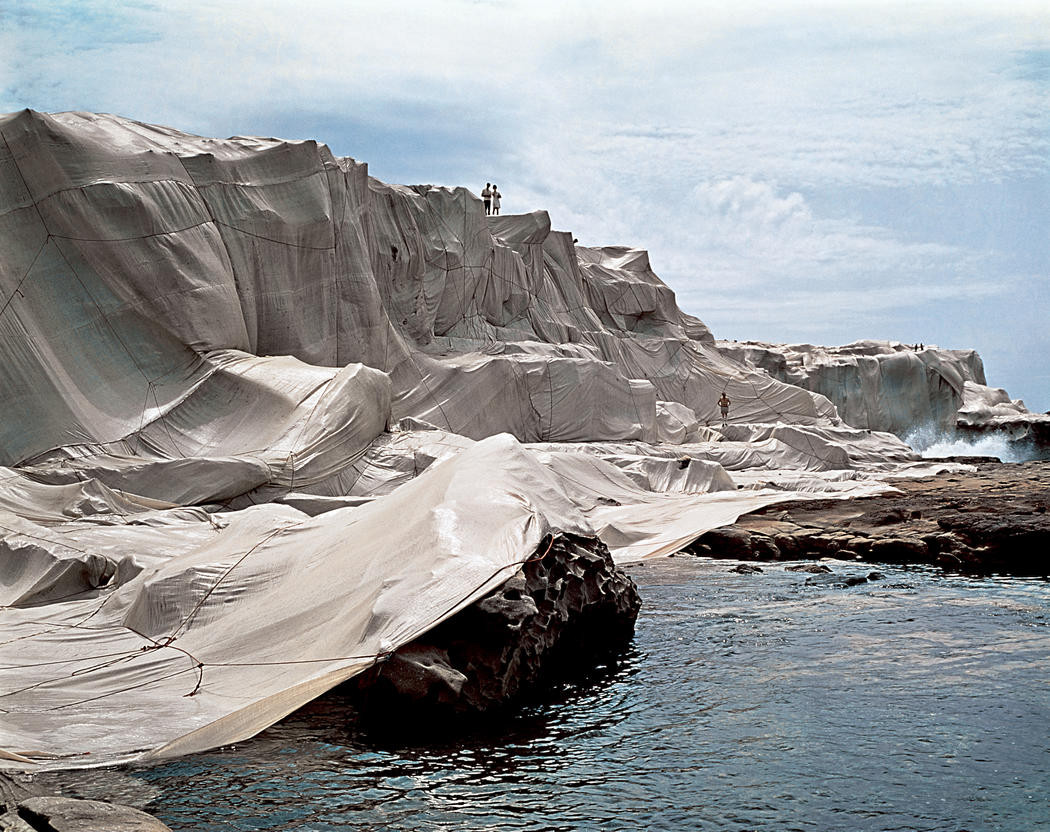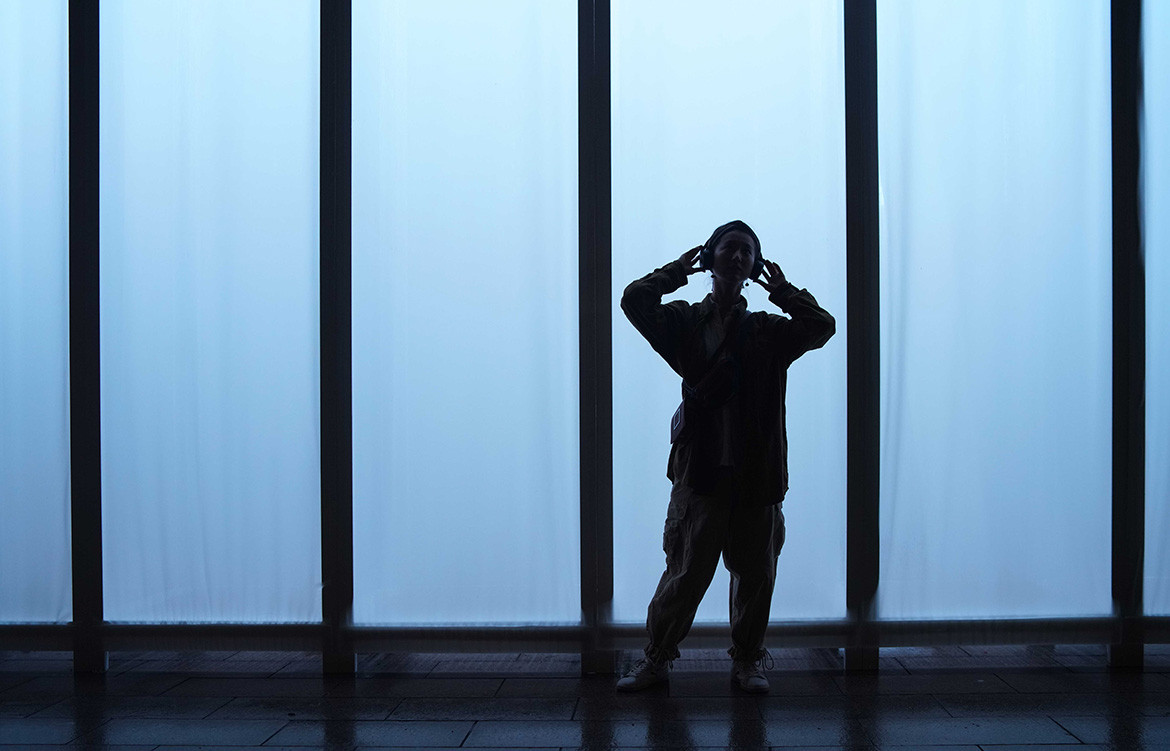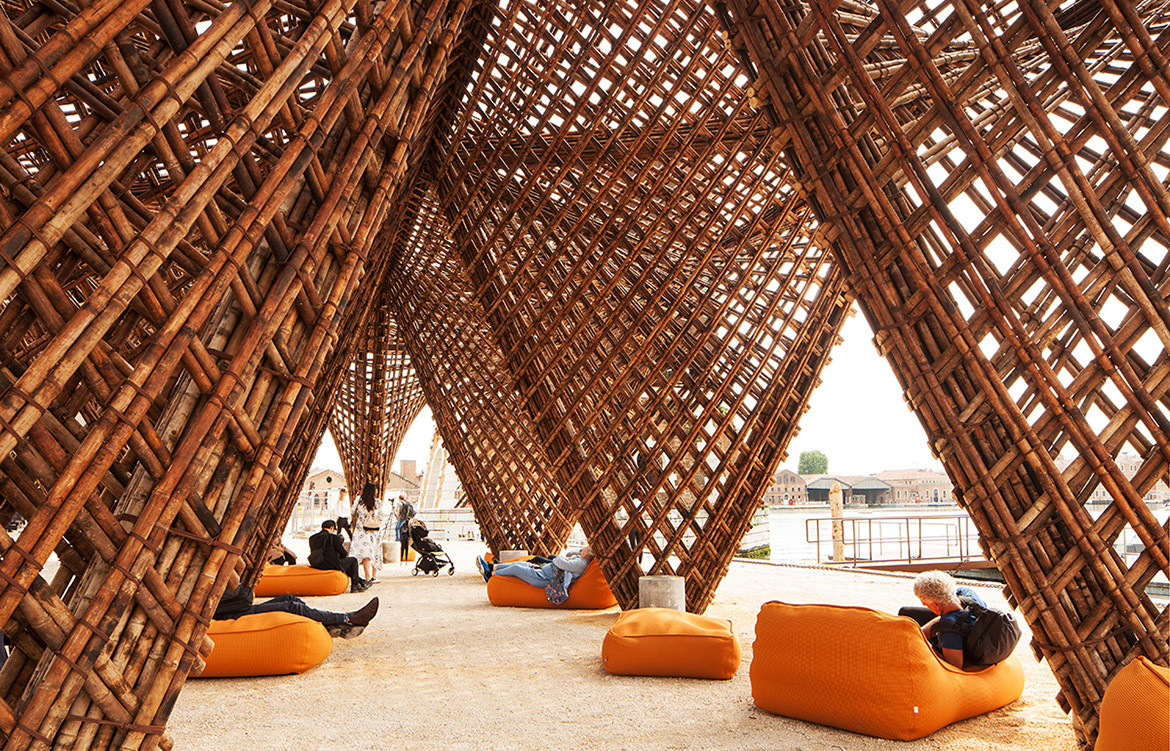Spectacular architectural pavilions are big crowd-pleasers, but critics claim they’re running out of control.

Bamboo Stalactite Pavilion By Vo Trong Nghia At The 2018 Venice Architecture Biennale
September 26th, 2019
Temporary architectural pavilions are spawning with increasing frequency and flamboyance around the world. Some of the more recent ones include such as an origami-like structure that engulfed the statue of the Holy Roman Emperor in Munich, then disappeared. Another, conjured in Los Angles as a kind of towering funnel attempts to harness the ephemeral energy of lightning. Earlier, in Harbin, China, the world’s tallest ice pavilion was built in the shape of a flamenco dress. Happily, it’s since thawed.
“What’s interesting is how much the typology has exploded,” says University of Queensland professor John Macarthur, co-author of the book, Pavilion Propositions. “When London’s Serpentine Gallery launched its summer pavilion program in 2000 with an installation by Zaha Hadid it marked the revival of an almost forgotten form. By 2010 there were something like 45 temporary pavilions happening around the world and in 2015 there were, by our calculation, 170!” Since then they have multiplied almost promiscuously.

The CO2 Pavilion By Dutch-Chinese practice Superimpose for the Beijing Design Week
Hadid’s pavilion was intended as “a structure, a marquee, a tent” recalls former director of the Serpentine, Julia Peyton-Jones; a one-night party venue for the gallery’s 30th birthday celebrations. But so successful was it, so wow the factor, that the minister of culture in the New Labour government agreed to extend its run, turning it into a de facto temple to Cool Britannia – and setting in train a phenomenon critics reckon is now veering out of control.
Over the past 19 years, the Serpentine summer program has seen temporary structures by Illuminati including Oscar Niemeyer, Rem Koolhaas, Frank Gehry and Jean Nouvel occupy the elegantly groomed grounds of Kensington Gardens, Hyde Park, Central London. Unidentifiable flying objects of no fixed function but a lot of pizazz, the 2016 iteration by Danish It-boy architect Bjarke Ingels clocked up close to two million visitors. In 2017, the Serpentine gallery successfully exported its pavilion franchise to Beijing, with a steel beam and cable construction by JIAKUN Architects outside WF Central, a shopping and hotel complex in the Dongcheng District. It lived for four months and was then disassembled.
“We have enormous affection for things that are temporary,” says Sydney architect Camilla Block, of Durbach Block Jaggers. She’s quoting environmental artist Jeanne-Claude who with her late-husband Christo spent some 60 years dramatically wrapping major architectural structures like the Reichstag in Berlin and the Point Neuf bridge, Paris, in lengths of fabric and rope. (Their plan to wrap the Sydney Opera House never eventuated, although they did shroud two kilometres of the rocky shoreline of Little Bay in some 93,000 square metres of erosion-control fabric and 56 kilometres of polypropylene rope, back in 1969.)

Christo and Jeanne-Claude, Wrapped Coast, One Million Square Feet, Little Bay, Sydney, Australia, 1968-69. Photo: Shunk-Kender © 1969 Christo.
“As architects, we’re used to dealing with the idea of longevity, so doing something that is meant to be ephemeral seems quite scary. Pavilions have a lot of uses but strictly speaking, there is no use at all,” says Block.”
For Beijing practice Superimpose, a reframing technique was used to create the CO2 Pavilion as part of Beijing Design Week. A rectangular assemblage of translucent fabric panels erected on a banal city carpark, it was designed to contain two of the existing four trees, and by isolating them imbuing them with new meaning. “As a studio, we always look at context first, then try to add something to an already existing layer, says Ruben Bergambagt, one-third of Superimpose along with Carolyn Leung and Ben de Lange. “In the case of this pavilion, by re-contextualising some of the trees, we’ve emphasised them, creating something almost like a Zen garden.”

The CO2 Pavilion By Dutch-Chinese practice Superimpose for the Beijing Design Week
Much of the rising critique of the temporary pavilion phenomenon hinges on the smudging of the lines between architecture and art; the blatantly sculptural, obliquely performative, ostensibly purposeless aspect of the structures. The Burning Manification of the profession, if you like.

Layers of translucent fabric panels in The Co2 Pavilion By Superimpose
And yet, if they didn’t exist we’d be deprived of the pleasure of contemplation they inspire, the shelter for community activities they may house, the material research they can enable. We’d have no Bamboo Stalactite Pavilion by Vo Trong Nghia at the Venice Architecture Biennale, its “green steel” structure fanning out poetically amid the docks of the Arsenale. No University of Stuttgart Institute for Computational Design and Constructure research pavilion that each year seeks to replicate a particular biological process. No “woven tapestry” of concrete roofing tiles by Mexican architect Frida Escobedo to offset the red brick Serpentine Gallery designed in the 1930s by James Grey West, originally a garden folly; a tea pavilion for London’s aristocracy.
Architectural follies for the 21st century, maybe we should just enjoy them while they last.

Bamboo Stalactite Pavilion By Vo Trong Nghia At The 2018 Venice Architecture Biennale
We think you would also like to read about MPavilion. And join our online community.
A searchable and comprehensive guide for specifying leading products and their suppliers
Keep up to date with the latest and greatest from our industry BFF's!

The Sub-Zero Wolf showrooms in Sydney and Melbourne provide a creative experience unlike any other. Now showcasing all-new product ranges, the showrooms present a unique perspective on the future of kitchens, homes and lifestyles.

Sub-Zero and Wolf’s prestigious Kitchen Design Contest (KDC) has celebrated the very best in kitchen innovation and aesthetics for three decades now. Recognising premier kitchen design professionals from around the globe, the KDC facilitates innovation, style and functionality that pushes boundaries.

Channelling the enchanting ambience of the Caffè Greco in Rome, Budapest’s historic Gerbeaud, and Grossi Florentino in Melbourne, Ross Didier’s new collection evokes the designer’s affinity for café experience, while delivering refined seating for contemporary hospitality interiors.

In a project both thoughtful and practical, Sam Crawford Architects (SCA) has completed a multifunctional community centre in Sydney’s inner west.

With contextual care and the odd formal flourish, the Monash University Pharmacy Pavilion has been completed by Splinter Society.
The internet never sleeps! Here's the stuff you might have missed

The Australian Design Centre (ADC) this year celebrates 60 years! A series of events are coming up to mark the occasion.

On the 22nd of February, the local design scene brimmed with excitement as Unison marked its 10th anniversary by becoming the first MillerKnoll dealer in the Australia and New Zealand region.